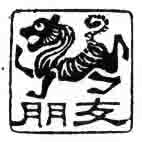Meditation Sounds – a mindfulness challenge. You think it’s easy: How to beat a gong gently and mindfully and yet powerfully. Your state of mind manifests itself in the way you make the gong sound.

It’s so ordinary. It’s about mindfulness and everyday things: beating a gong.
I first had to beat a gong when I visited a long Zen retreat – a sesshin – many years ago. A meditation seminar with a great master – Sasaki Roshi.
We saw this master only from time to time – when we presented him our answer or non-answer to our koan. Koans are meditation tools – questions without answers. We then sat in front of a large gong attached to a frame. And when a person left the Roshi’s room and it was my turn, I had to announce myself by beating the gong.
I had to beat exactly in the right way. If it was not strong enough, there was no sound. If the beat was too strong, the gong and its frame fall all the way rumbling down a long staircase. Even if the gong was beaten without complications, the Roshi knew my state.
Running, kneeling, hands on each other – Gasho. If I made a little mistake, the master took his bell and I was dismissed even before I could say anything. Until the next try the next day.
It is an enormous mindfulness exercise to beat the gong. Of course, you can hit the metal wildly. Then there is a noise. This may be good to indicate that a break is coming to an end.
Meditation sounds. The sound can be very melodic or dull. Every stroke is unique. Pay attention to the differences. Try to produce a melodic tone.
You can hit the gong gently and mindfully and yet powerfully. Your state of mind manifests itself in the way you hit the gong. Try to make a silent sound.
Every little variation changes the sound. Is it really round and melodic? Does it sound really good? I notice that the first beat usually sounds wonderful spontaneously. Then I try to beat in exactly the same way. That seems almost impossible.
It is a challenge, to beat the gong mindfully and gently and to produce three sounds, not too loud and not too quiet and at the same time fully melodic. Was the first beat quiet and the last one too loud?
Let the sound fade gently after each beat. It’s amazing how long it still goes on.
Shamans use their drum as a vehicle. That is, they follow the sound with their mind and their spirit wanders into other worlds and levels of reality. This is also possible with a gong or a singing bowl.
A beautiful sound invites you to travel. It is like a vehicle for the mind. You board on the sound and travel. A journey into the vast space and into silence. I follow a sound as it vibrates and moves on, spreading in all directions and the mind goes into the state without thoughts and into the non-dual realm where there is no subject-object relationship and no ego. Just as a trace of paint dissolves in the water. No thoughts and fully awake. Meditation sound.
Whether you take a gong or a singing bowl is probably a matter of taste. I use singing bowls. Much simpler are cymbals. If you hold them by their bands and strike them mindfully, there is almost always a beautiful sound.
Meditation sounds. Hitting the gong well is not easy. The only thing that helps is to practice.
